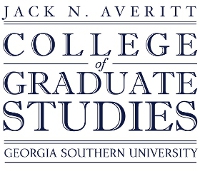Term of Award
Spring 2023
Degree Name
Master of Science, Civil Engineering
Document Type and Release Option
Thesis (open access)
Copyright Statement / License for Reuse

This work is licensed under a Creative Commons Attribution 4.0 License.
Department
Department of Civil Engineering and Construction
Committee Chair
Stetson Rowles
Committee Member 1
Francisco Cubas
Committee Member 2
George Fu
Committee Member 3
Jaime Plazas Tuttle
Abstract
According to the World Health Organization, 785 million people lack access to basic drinking water facilities, and 144 million people rely on surface water which is prone to microbial contamination. Point-of-use (POU) water disinfection technologies can be adopted to help address these issues by treating water at the household level; however, navigating various POU disinfection technologies for a given water source or location can be difficult. While numerous conventional POU technologies exist (e.g., boiling water, POU chlorination), new emerging POU technologies (e.g., using novel materials or advanced processes) have been coined by developers to be lower cost with higher treatment capacity. It is unclear if these claims are substantiated and how novel technologies stack up against conventional ones in terms of cost and environmental impacts when considering a necessary level of disinfection for human health. This research compares POU technologies using quantitative sustainable design methods to assess four different POU treatment technologies. The technologies evaluated include chlorination using sodium hypochlorite, silver nanoparticle-enabled ceramic water filter, ultraviolet mercury lamps, and ultraviolet light-emitting diodes. This study leverages open-source Python packages to assess the relative sustainability using techno-economic analysis, life cycle assessment, and disinfection efficacy. Uncertainty is included in all input parameters, and sensitivity analysis (i.e., Spearman's rank correlation) is used to identify which assumptions influence outcomes. The study assumes a household size of 6 people, and a lifecycle of 5 years. Escherichia coli is used as an indicator microbe in characteristic surface and ground waters. We set raw water types to capture the impact of water quality parameters (e.g., turbidity and total organic carbon) on sustainability. Per capita cost (USD∙cap-1∙yr-1) and global warming potential (kg CO2eq∙cap-1∙yr-1) are tracked as sustainability indicators. Study results can potentially inform decision makers, non-profit organizations, and future research on sustainable approaches to safe drinking water through POU technologies.
OCLC Number
1408451310
Catalog Permalink
https://galileo-georgiasouthern.primo.exlibrisgroup.com/permalink/01GALI_GASOUTH/1r4bu70/alma9916565842802950
Recommended Citation
Elijah, Bright C., "Accessing the Relative Sustainability of Point-of-Use Water Disinfection Technologies through Costs and Environmental Impacts" (2023). Electronic Theses and Dissertations. 2566.
https://digitalcommons.georgiasouthern.edu/etd/2566
Research Data and Supplementary Material
No


